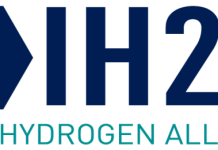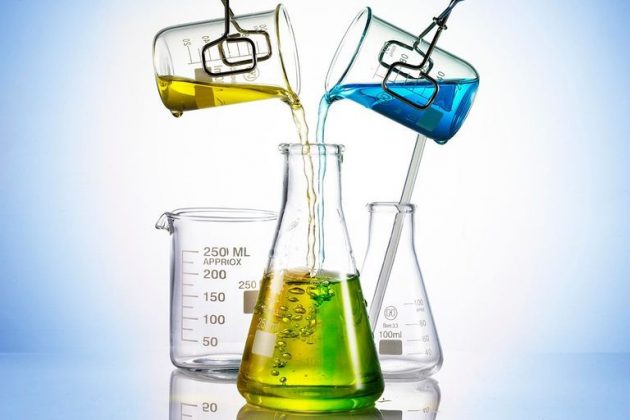Internet of Things (IoT) is generating a lot of hype. It will also generate a lot of data from billions of devices connected to each other. But do we have the capacity and ability to extract value out if it, asks our columnist? IoT will provide business intelligence only when integrated with Big Data analytics. Cybersecurity is a major threat to its widespread adoption in the Chemical Industry.
Internet of Things (IoT) is a concept in which objects with sensors embedded in them communicate with each other over the Internet. Gartner has predicted that IoT will connect 20 billion devices by 2020. Over 20 zettabytes (one trillion gigabytes) of data would be generated consequently. Do we have the capacity and more importantly the ability to extract meaningful information from this humungous amount of data? In the populist world of IoT, a refrigerator would directly place the order for milk or juices when the inventory goes down below a threshold level. Chemical industry professionals cannot but be amused by such examples, because this has been a routine in our industry for many decades now. Depletion of inventory in a tank or vessel is sensed by a level transmitter which then takes appropriate action; usually opening or closing a control valve. The transmitter and control valve are connected together by wires and cables and not through the Internet. The Internet has lowered connectivity costs to such an extent that 20 billion devices on IoT are no longer a pipedream.
Does the chemical industry know how to derive value from IoT generated data? Thought leaders in the industry ought to ask two tough questions:
a) Will IoT improve business processes to reduce costs and thus improve the bottom line?
b) Will IoT help in discovering new product applications and thus grow the top-line?
Business Questions
For IoT to succeed industrially, the emphasis has to shift from data gathering to data analysis. The additional data has to provide intelligence for improving business efficiencies or disrupting old business models. Does the chemical industry know how to derive value from IoT generated data? Thought leaders in the industry ought to ask two tough questions:
a) Will IoT improve business processes to reduce costs and thus improve the bottom line
b) Will IoT help in discovering new product applications and thus grow the top-line?
In the absence of clear-cut answers to the above two questions, IoT will continue to remain a thing of curiosity in IT seminars where mindless buzzwords like “end to end solution”, “massive scalability”, “deep learning” and “hybrid architecture” are bandied around. IoT should be driven by the industry and not by management consultants or IT companies.
Equipment Monitoring
An easy to envisage application of IoT in the chemical industry is in equipment health monitoring. Equipment fitted with sensors will continuously transmit data about their health. These real-time data can be used for the timely intervention to prevent breakdown and extend the operating life of the equipment. This is not exactly a novel idea. Large process gas compressors are already equipped with Machine Monitoring Systems with temperature, vibration and displacement measurement probes that provide early warnings about a probable bearing failure. What IoT hopes to do with its low connectivity cost is to extend such health monitoring across the plant to a variety of equipment. A chemical plant has hundreds of valves and an IoT based system can monitor the health of each and every valve. Sensors mounted on positioners can monitor the hysteresis of control valves and provide suitable remedial action. All these data can be made available in real-time not just in the control room, but also at remote locations and even on handheld devices like a smartphone. Vendors can track the performance of machines and hardware supplied by them in real-time and make improvements for future. The obvious benefits are improved reliability and reduced downtime. Jet engine manufacturers like GE and Rolls Royce have already adopted such practices.
Data Analytics
IoT is not an end in itself; in order to be meaningful, it has to be coupled with data analytics. By collecting a vast amount of data, much of it granular, IoT offers a huge scope for improving process efficiencies. The data gathered by IoT is large and diverse; it is Big Data. Getting business and process insight out of it requires good investment in Big Data analytics. Batch processing is a good example that can benefit from IoT integrated Big Data analytics. Pharmaceutical and speciality chemical companies usually have an ideal “Golden Batch” with perfect inputs and perfect process parameters. It is a challenge to replicate the perfect conditions of the “Golden Batch” batch after batch. IoT can facilitate this by real-time monitoring and tweaking of process parameters. Another application of IoT is in improved energy management. By dynamically monitoring the energy consumption of every single user in the plant, IoT can pave the way for energy savings through optimisation.
New Business Models
IoT is popularising the concept of Precision Agriculture in which inputs are tailormade to the needs of the crop, soil and weather with the objective of maximising the output. For example, a network of embedded sensors will record the moisture and micronutrient content of the soil. These data coupled with meteorological intelligence will determine the application of water and fertiliser. Micronutrients appropriate to the soil and the crop will be packaged with the fertiliser. Precision Agriculture needs chemical industry to adopt new business models in which fertilisers are no longer commodity chemicals priced on the weight basis, but performance chemicals priced on the outcome. IoT will play an important role in such a business model, in which the chemical industry works in close partnership with farmers
to provide solutions for increasing the farm output. IoT will help discover and develop similar customer-centric business models for other chemicals too.
IoT offers a huge scope for improving process efficiencies. The data gathered by IoT is large and diverse; it is Big Data. Getting business and process insight out of it requires good investment in Big Data analytics.
Cybersecurity
A serious obstacle to the widespread adoption of IoT by industry is cybersecurity. Internet networks can be hacked into by cybercriminals. Business intelligence and plant safety are a threat. Malfunctioning sensors can be embedded into equipment by a rogue supplier. The infamous Stuxnet, world’s first digital weapon, readily comes to mind. One way to improve the security of IoT is to implement it on a Blockchain platform. As explained in a previous column (Chemingineering, December 2017), Blockchain is a digital platform for exchanging data in a secure and transparent way. The convergence of IoT and Blockchain is however far from easy. IoT by definition has a centralised network; whereas decentralisation is the essence of Blockchain. The devices on an IoT network are low powered and may not be capable of running the encryption algorithms required for the security of Blockchain. Marrying IoT and Blockchain is one of the hottest R&D areas today.
Epilogue
Chemical industry can be forgiven for being sceptical about the hype of IoT. Before investing in IoT chemical industry needs to have a clear understanding of the benefits that are likely to accrue. Investment in IoT has to be balanced with investment in Big Data analytics, else there is a real danger of being inundated with irrelevant information. If IoT is the hardware, Big Data analytics is the software that runs on it. Presently only management consultants and IT companies are making noise on the Internet about IoT. Major players in the industry are keeping the cards close to their chest.
Readers’ responses may be sent to

































